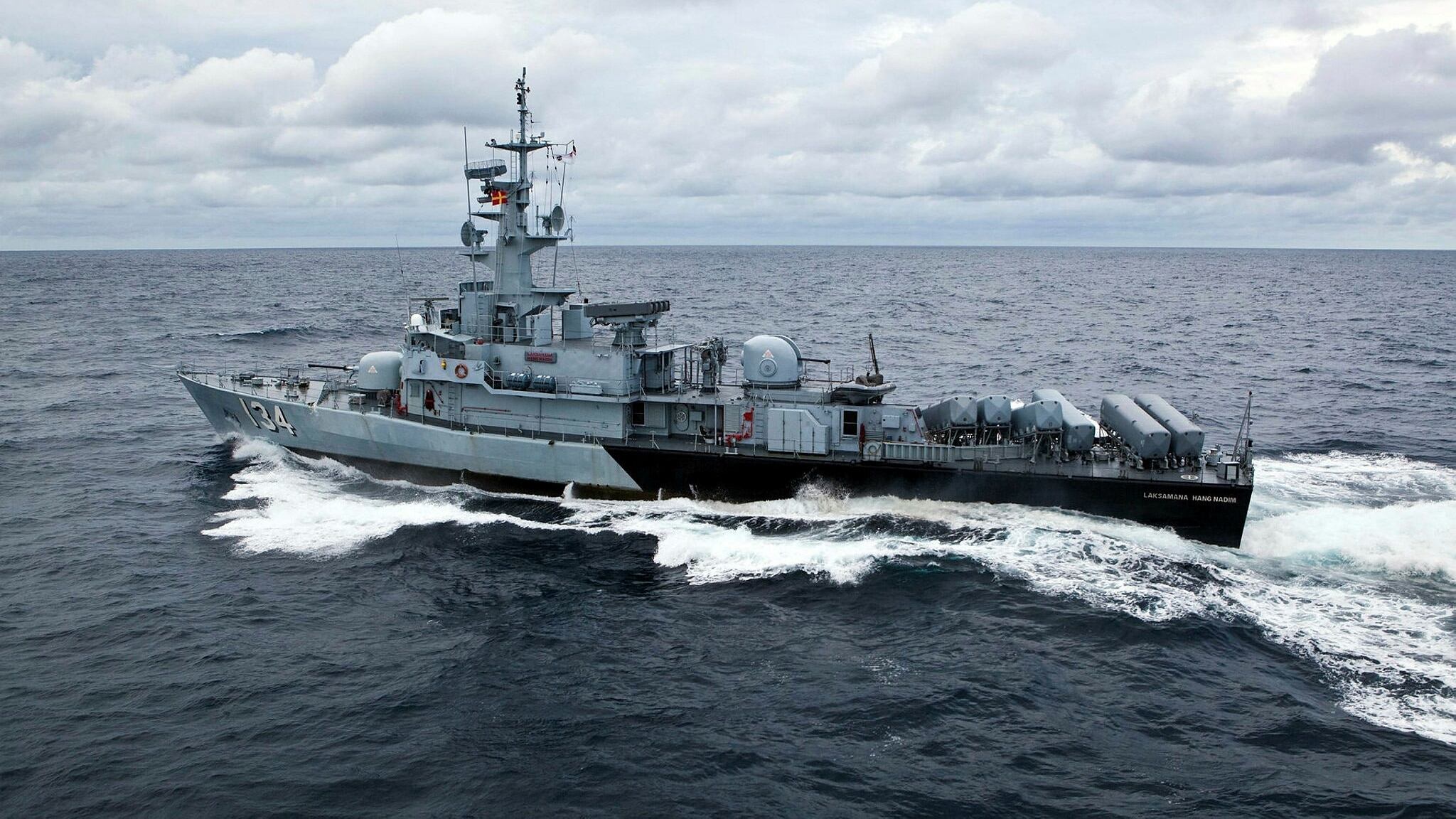MELBOURNE, Australia ― Malaysia has launched the first of its new littoral combat ships ordered under a $2 billion contract signed in 2011, as the Southeast Asian country continues its drive to modernize its navy.
The ship, named the Maharaja Lela, was launched Thursday at the facilities of builder Boustead Naval Shipyard in Lumut, Malaysia, in a ceremony attended by Malaysian Defence Minister Hishammuddin Hussein and Chief of the Royal Malaysian Navy Adm. Kamarulzaman Bin Haji Ahmad Badaruddin.
Malaysia’s LCS design is based on the French Gowind 2500 corvette, and the first ship is expected to enter service with the Royal Malaysian Navy in the first half of 2019. All six of the program’s ships are scheduled to be in service by 2023. Boustead had laid the keel of the second ship in February this year.
The 3,100-ton ship incorporates stealth characteristics, and its primary armament consists of a single BAE Systems Mk3 57mm gun in a stealthy turret; a 16-cell Sylver vertical launching system for the MBDA VL MICA surface-to-air missile; and a pair of quadruple launchers for the Kongsberg anti-ship Naval Strike Missile. Additionally, a pair of MSI Seahawk 30mm cannons and two J+S Marine triple torpedo launchers are also fitted.
The ship’s electronics suite includes the Thales Smart-S Mk2 3-D surveillance radar and Captas-2 variable-depth sonar, while Rheinmetall will supply the TMX/EO Mk2 fire-control radar and TMEO Mk2 electro-optical tracking systems for the ships. A Swiss subsidiary of Rheinmetall recently agreed on a joint venture with Boustead to provide project management, contract administration and related services for Malaysia’s defense industry.
RELATED

France’s Naval Group will supply its SETIS scalable multifunction combat management system for the ships, with shipbuilder Boustead to lead the combat system equipment procurement and integration for Malaysia’s LCS program.
As Defense News has previously reported, Malaysia is currently in the process of recapitalizing its aging Navy, with plans to reduce the number of ship types from 15 to five. The so-called 15-to-5 plan, unveiled in 2015, calls for the reduction of the service’s order of battle from 15 to five classes of ships and submarines, which it hopes will trim sustainment costs by retiring older ships and reducing the number of ship classes operated by the Navy by 2030.
The five classes of ships are planned to consist of 12 LCS vessels, 18 Kedah-class offshore patrol vessels, 18 Chinese-designed littoral mission ships, three multi-role support ships of an as-yet undetermined design and four submarines. Of these, those in service include only six Kedah-class offshore patrol vessels, which are based on the German Blohm+Voss MEKO 100 design, along with two French Scorpene diesel-electric submarines.
Mike Yeo is the Asia correspondent for Defense News.








